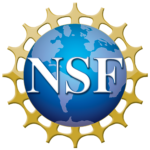Grants recently awarded to the Glass lab:

Methane from Nontraditional Abiotic Sources and Potential for False Positive Biosignatures
Rescorp Scialog, 2021-2022
PIs: Jennifer Glass, Edward Kite, Smadar Naoz
Students: Camille Butkus
Given the great emphasis on methane as a biosignature gas, our goal is to assess alternative abiotic methane origin pathways beyond those that have been widely discussed to eliminate false positives more robustly in life detection on exoplanets. We will explore the implications of unexplored diversity in both redox state and carbon abundance to produce methane false positives.
Microbial interactions with methane clathrate: Implications for habitability of icy moons
NASA Exobiology
2019-2022
PI: Jennifer Glass
Co-Is: Sheng Dai, Raquel Lieberman, Loren Williams
Postdocs/students: Abigail Johnson, Dustin Huard, Manlin Xu
Methane clathrates are likely widespread in our solar system, including on icy moons and the Martian subsurface, yet their habitability remains virtually unstudied. The proposed research will investigate interactions between microbial proteins and methane clathrates. Specifically, the proposed work will test the hypothesis that microbes living in methane clathrates encode proteins optimized for clathrate binding, and that these “clathrate binding proteins” (CBPs) alter the structure, thermodynamics and kinetics of methane clathrates. Our results will contribute to understanding biosignatures of microbial colonization of methane clathrates on Earth and potentially elsewhere in our solar system. The proposed research will: (i) heterologously express, purify, assay, and biophysically characterize candidate CBPs; (ii) quantify the effects of CBPs on methane clathrate thermodynamics and kinetics of formation and decomposition in laboratory experiments with pressurized vessels; (iii) solve crystal structures of select CBPs and characterize static interactions with water molecules; (iv) use high-throughput homology modeling, molecular dynamics, and other computations to characterize structures and dynamics of CBPs; (v) create a public database of CBPs.
Characterization of microbes mediating anaerobic oxidation of methane coupled to iron reduction from an ancient ocean analogue
NASA Exobiology
2014-2017
PI: Jennifer Glass
PhD student: Marcus Bray Postdoc: Nadia Szeinbaum, Jieying Wu
Early microbial life evolved in a biosphere rich in iron and methane, and low in sulfate and oxygen. Prior to the Great Oxidation Event (2.4 billion years ago), the major sink for methane is postulated to have been microbial anaerobic oxidation of methane (AOM). Microbes that coupled AOM to Fe(III) reduction (hereafter abbreviated Fe-AOM) may have comprised a significant portion of biomass in the anoxic ocean due to the scarcity of alternative electron acceptors (i.e. sulfate, nitrate). Recently, geochemical evidence for Fe-AOM has been discovered in numerous modern environments. However the microorganisms catalyzing iron-dependent AOM remain completely unknown. We propose to enrich, isolate and characterize these enigmatic microbes using existing enrichment cultures from ferruginous Lake Matano, Indonesia, an Archean ocean analogue.

